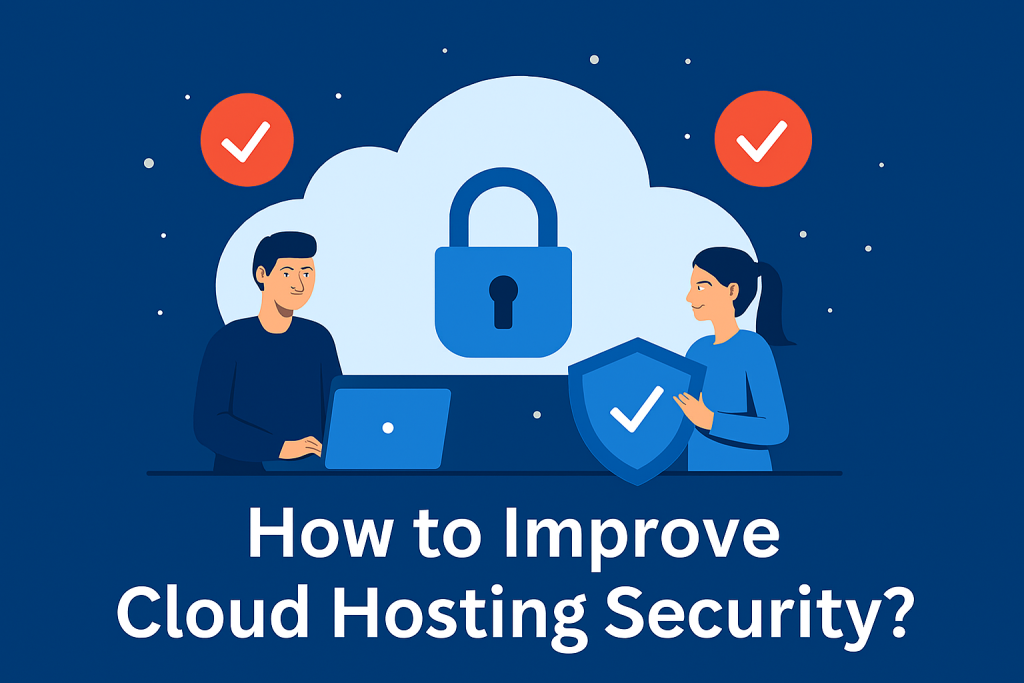
As the Oracle cloud’s prediction suggests, by 2025, the organizations will share over 600 percent of sensitive data in the cloud for others to access. It becomes nearly essential to know how to protect this data. Cloud has made it easy for small and large industries to not depend on an unreliable server. It avails the data to everyone who is a part of the system to share it hassle-free.
Cloud hosting provides an organization with three base types of platforms, namely IaaS (Infrastructure as a Service), PaaS (Platform as a Service), SaaS (Software as a Service). It has been providing scalability, integrity, and speed for all the resources on the cloud. However, it comes with its flaws, and these flaws are concerning even more because they’re associated with security.
Read on to know more about the best security practices that can be implemented to keep cloud security in place.
Remove all the default credentials and implement role-based access.
Keeping the default credentials reduces a hacker’s work to a great extent. He doesn’t have to brute force and guess the credentials, and without wasting any time, he is a part of your system. Thus, it is always advised to remove default credentials and maintain a password policy.
Allotting roles to the users of a company and giving privileges of access accordingly is the role-based policy. In addition to using cloud IT support services, having a role-based functionality can improve security through issuing minimum access to all the employees regarding the most sensitive data present on the premises. Thus, in the event of an insider breach, it becomes easy to locate the faulty group as we can target them according to their roles.
Make sure that the third-party integrations are secured.
Most of the time, it is not your software that is insecure but the third-party integrations that are leaking your data from the side channels. To avoid this, the company can prefer purchasing software integrations from the brands aware of their security strength. They might reduce the impact of the breach if any.
Spread awareness to the employees regarding cloud security.
As the data breaches have increased significantly due to cloud deployment by the organization, one of the major factors behind it is the lack of employee training. Most of the critical issues could have been avoided if the employee is aware of his role and contribution to maintaining a secure environment.
Make a more robust and encrypted network for sensitive data sharing.
Having your master encryption key can help you secure your data on the cloud in three phases- data in rest, data in transit, and data in motion. Only the people who have access to the decryption key can read it. This protects the tampering of your data due to intercepting by hackers.
Test your cloud security strength frequently.
Keeping security as a part of your progress cycle benefits the company in many ways. Frequent vulnerability assessments and checks can help us to analyze and grade the security strength. Consecutively, one can release frequent security patch updates and introduce new mitigation techniques to tackle any hacking activity.
When organisations evaluate options to strengthen their defensive layers, examining trusted providers of secure appliances, such as those offered by Rhino Networks, can be one approach to complement internal security practices. While not the only path forward, exploring established vendors can help ensure that tools align with existing compliance requirements and integrate effectively with broader monitoring systems.
Implement and focus on network resource sharing.
Installation of the intrusion prevention and detection system can help the systems detect the anomalies. Any unusual activity on the network from an unknown resource immediately alerts the system of something suspicious. Besides, such network resource sharing systems can also help check for any malicious source from its stored database of IP ranges.
Keep a strategy and emergency plan ready.
A cloud security team needs to have a thoroughly planned chain of actions plotted strategically to minimize a cyberattack’s impact effectively. This strategy might help implement the necessary actions first and not delay time in any adverse incident.
Tracking and monitoring.
Lastly, the entire activity needs to be administered by a person of higher authority who can take charge of all the clouds’ functionalities. The person in charge needs to track all the users’ activities, plot the unusual incidents, eliminate the false positives, and take appropriate actions as a part of remediation.
Setting up roles, monitoring passwords, setting up antivirus and malware protection, and detecting underlying threats are also a few of the ways through which cloud hosting can be secured.
Towards the conclusion
As we conclude on the best tips to improve cloud hosting security, it is necessary to implement these steps and maintain the resources intact. Frequent auditing and assessment help in securing cloud hosting. However, it is also essential to know that while migrating your cloud service providers or removing your data, we need to shift all the data and leave no traces that can be exploited in the coming future.
I hope these resources are helpful if you’re planning to secure a cloud or host your organization on the cloud.

Author Bio: This article has been written by Rishika Desai, B.Tech Computer Engineering graduate with 9.57 CGPA from Vishwakarma Institute of Information Technology (VIIT), Pune. Currently works as Cyber Threat Researcher at BforeAI. She is a good dancer, poet and a writer. Animal love engulfs her heart and content writing comprises her present. You can follow Rishika on Twitter at @ich_rish99.